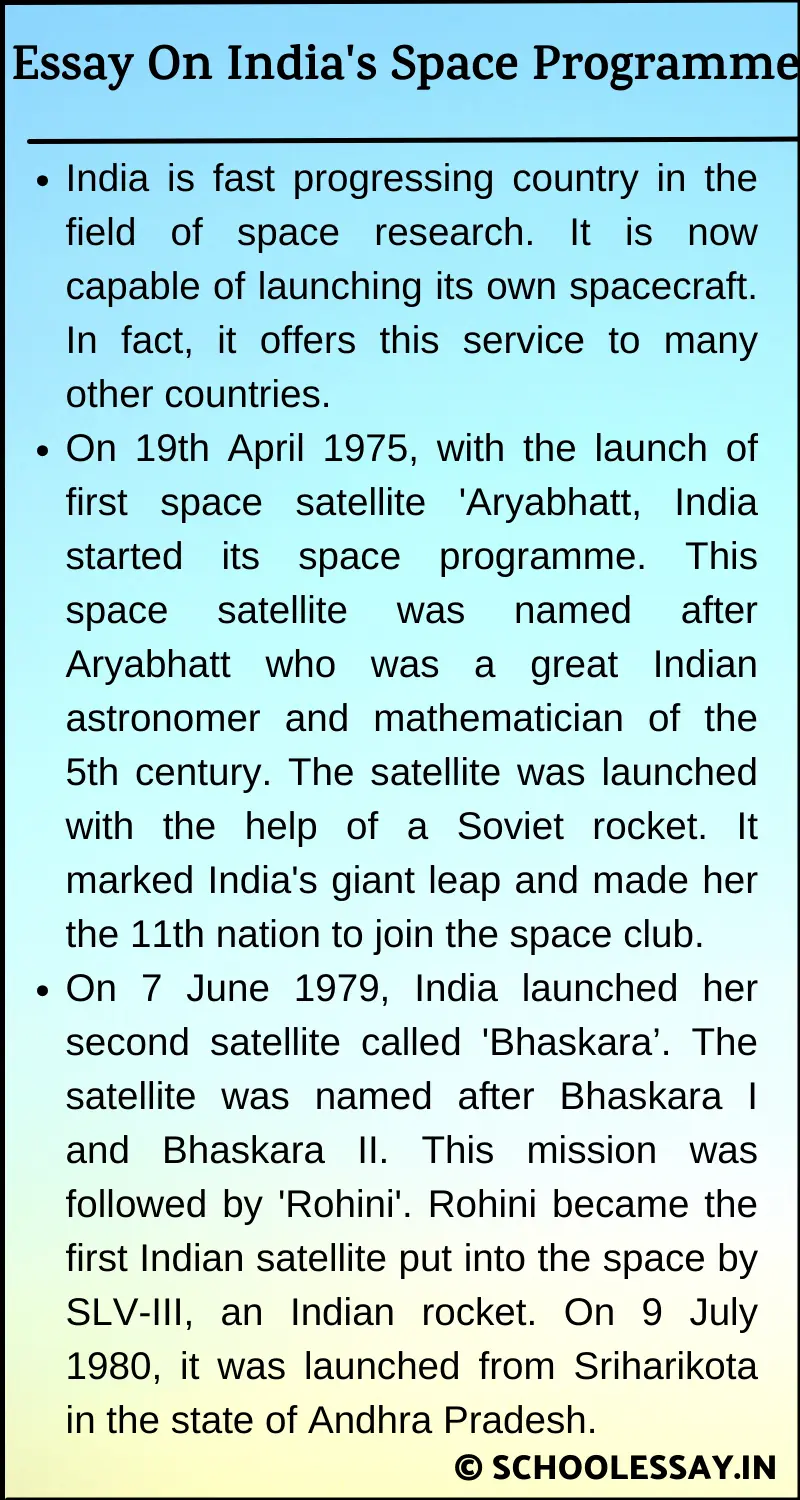Essay On India’s Space Programme
India is fast progressing country in the field of space research. It is now capable of launching its own spacecraft. In fact, it offers this service to many other countries.
On 19th April 1975, with the launch of first space satellite ‘Aryabhatt, India started its space programme. This space satellite was named after Aryabhatt who was a great Indian astronomer and mathematician of the 5th century. The satellite was launched with the help of a Soviet rocket. It marked India’s giant leap and made her the 11th nation to join the space club.
On 7 June 1979, India launched her second satellite called ‘Bhaskara’. The satellite was named after Bhaskara I and Bhaskara II. This mission was followed by ‘Rohini’. Rohini became the first Indian satellite put into the space by SLV-III, an Indian rocket. On 9 July 1980, it was launched from Sriharikota in the state of Andhra Pradesh. The success of this mission brought recognition to the space programme of India.
Rohini II became India’s fourth satellite. It was launched by the launch vehicle SLV-III from Sriharikota on 31st May 1981. It was designed to provide useful data for 300 days. It weighted 38 kilograms. Unfortunately, it burnt in space and failed to complete its mission.
On 20 November 1981, India launched its fifth satellite Bhaskara II in space. It was the Earth observation satellite. This mission was a milestone in the space journey of India as it brought to India the honour of being a space nation.
On 19 June 1981, with the launch of APPLE, a communication satellite, India entered the domestic satellite communication era. India launched INSAT1A on 10th April 1982 and later joined the group of technically advanced countries.
In April 1983, India successfully launched Rohini satellite RS-D-2. This marked the opening of new horizons for India. It was the world’s first satellite linking services like mass communication, telecommunication and weathercasting. It was launched in 1983 from US Space Shuttle, Challenger.
India’s space programme was primarily motivated by the vision of great Indian scientist Dr. Vikram Sarabhai. He is considered as the Father of Indian Space Programme. The main objective of India’s space programme has been to promote the growth of Space Science and technology for social and economic benefits of the country.
The launching of Chandrayan I in 2008 marked a landmark in the history of space technology of India. It orbited around the Earth and send data to scientists. The scientists studied various aspects of moon and prepared a map of the moon. The map furthered helped them in studying moon.
The launching of satellites like IRS’s, ASLV’s, PSLV’s have placed India in the list with USA, Russia, France and Israel who are important space research nations. Today, India enjoys a respectful position among other space research countries of the world.

ALSO READ:
- Essay On Indus Valley Its Town Planning And Civil Life
- Essay On Industrial Revolution And Its Causes
- Essay On Importance of Good Manners
- Essay On Importance of Physical Education In Schools
- Essay On India Can Become A World Power
- Essay On The India of My Dreams
- Essay On Importance of English Language
- Essay On Importance And Uses Of Electricity
- Essay On If I Win a Lottery
- Essay On If I Were the Prime Minister of India


